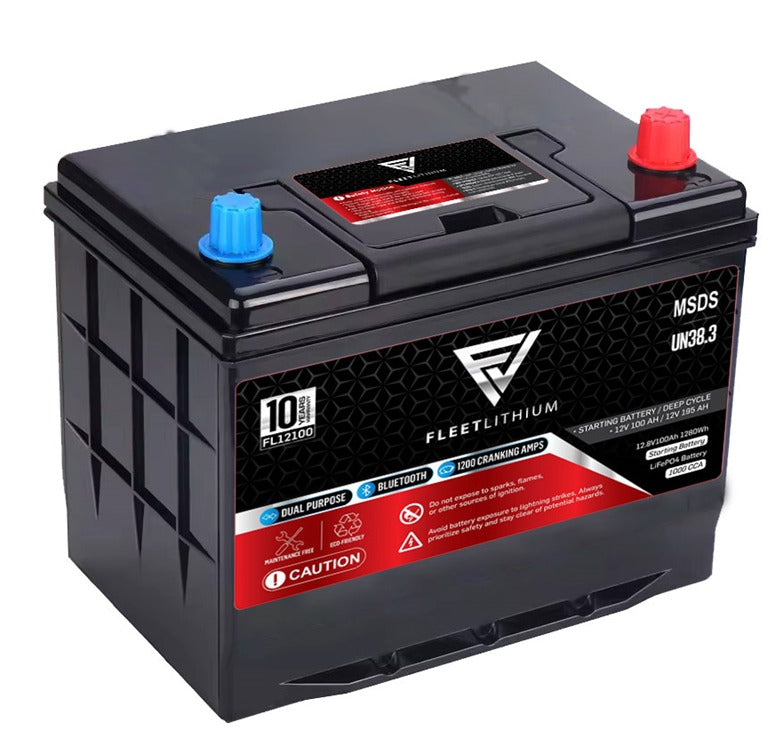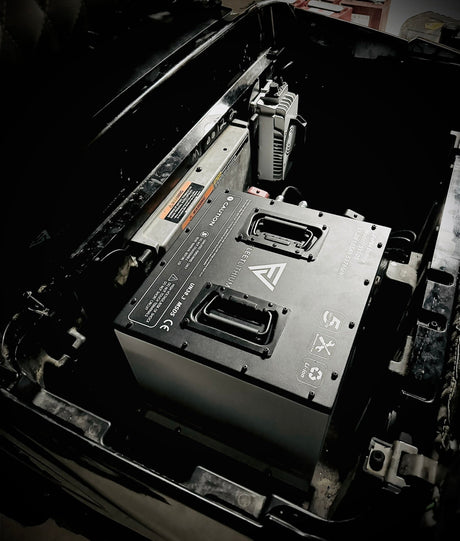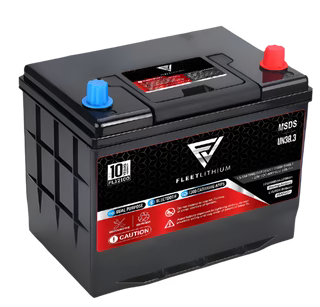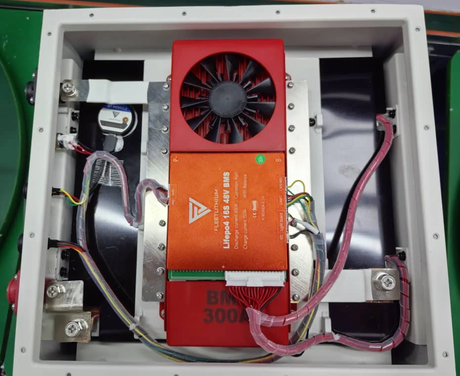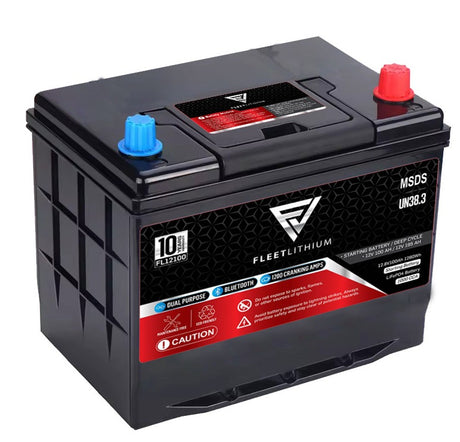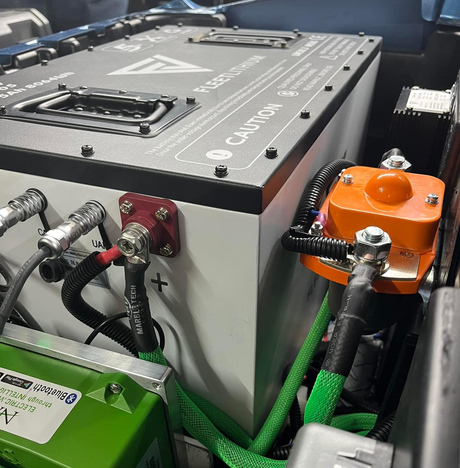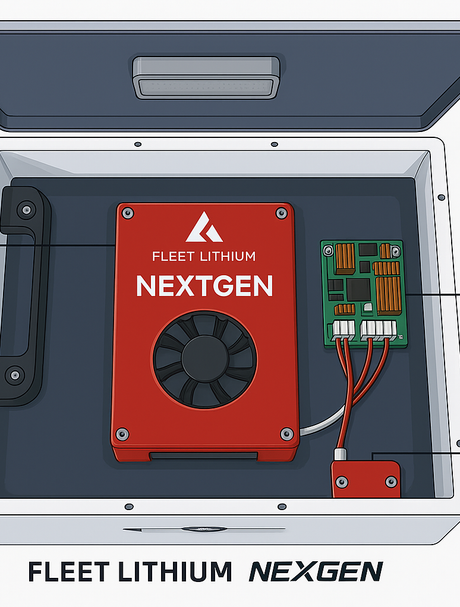Key Factors for Replacing Lead-Acid Batteries with Lithium:
A. Voltage (V)
- Voltage Compatibility: Ensure that the lithium battery matches the voltage of the system you're replacing. Lead-acid batteries typically come in 6V, 12V, 24V, or 48V configurations. Lithium batteries also come in these common voltages (such as 12V, 24V, 36V, or 48V), but it's essential to pick the right voltage to avoid mismatches in electrical systems.
-
Series & Parallel Configuration: If you need a higher voltage (for example, a 24V system), lithium batteries can be configured in series, just like lead-acid batteries. For larger systems, you can configure them in parallel to increase capacity while maintaining the same voltage.
B. Capacity (Amp-Hours, Ah)
- Energy Storage: Capacity is measured in Amp-Hours (Ah) and determines how long the battery can power devices at a given load. A higher Ah means more energy storage and longer runtime. In general, to replace a lead-acid battery, you'll want a lithium battery with comparable or greater capacity.
- Calculation: If you're replacing a 100Ah lead-acid battery, choose a lithium battery that offers at least the same or more Ah. Because lithium batteries are more efficient, you may need a smaller capacity to match or exceed the performance of lead-acid.
C. Amp Draw and Power Requirements
- Continuous Discharge Rate (Amps): Ensure the lithium battery can provide the continuous discharge needed by your appliances or system. This is crucial for high-draw devices such as refrigerators, air conditioners, or power tools.
- Peak Draw: Some devices (e.g., motors, inverters) require higher peak power to start. Ensure the battery can handle these spikes without damage.
D. Charge/Discharge Cycles
- Cycle Life: Lithium batteries typically last much longer than lead-acid batteries—up to 2,000-5,000 charge cycles versus 300-500 cycles for lead-acid. This results in fewer replacements and better long-term value.
- Depth of Discharge (DoD): Lithium batteries can be discharged to 80% or more without significant damage. In contrast, lead-acid batteries should only be discharged to about 50% for longevity.
E. Charging Speed
- Fast Charging: Lithium batteries charge much faster than lead-acid batteries (2-3 hours vs. 6-8 hours). This is an important factor for applications where downtime should be minimized.
2. How to Calculate Battery Requirements Based on Application:
A. For an Average Home (Solar/Off-Grid Systems)
To calculate the battery size for an off-grid solar home system, you need to determine the total daily energy consumption and match it to the battery's capacity.
-
Step 1: Estimate Daily Energy Usage (in Watt-Hours)
-
List the appliances and devices you use, and their average wattage and usage time (in hours).
Appliance Power (W) Hours Used/Day Energy Used (Wh) Refrigerator 150 24 3,600 LED Lights 10 8 80 TV 100 4 400 Laptop 50 4 200 -
Total Energy Used per Day = 3,600 + 80 + 400 + 200 = 4,280 Wh (4.28 kWh)
-
-
Step 2: Battery Size (in Amp-Hours)
-
To size the battery bank, divide the total energy consumption by the battery’s voltage.
If you're using a 48V lithium battery:
Battery Size (Ah)=Voltage×EfficiencyTotal Energy (Wh) Battery Size=48×0.94,280=43.24,280=99.2AhSo, you would need a 100Ah, 48V lithium battery or a combination of multiple batteries to meet the needs.
-
For deeper cycles or to allow for cloudy days, you may want to increase the Ah rating or add a safety margin, like 1.5x, which would be about 150Ah.
-
B. For Off-Grid RVs
In an off-grid RV setup, you calculate battery requirements similarly but with a focus on the number of hours the RV will be used daily.
-
Step 1: Estimate Daily Usage For example, the following appliances:
- 12V Refrigerator: 3.5A (12V) for 8 hours → 3.5A × 8h = 28Ah
- Lights: 1A for 6 hours → 1A × 6h = 6Ah
- TV/Entertainment: 3A for 3 hours → 3A × 3h = 9Ah
- Phone Charging: 2A for 2 hours → 2A × 2h = 4Ah
Total Daily Usage: 28Ah + 6Ah + 9Ah + 4Ah = 47Ah
-
Step 2: Choose Battery Capacity A common off-grid RV battery setup might use a 12V battery. To ensure the battery can provide enough power for a full day, you would need to select a battery with a capacity higher than your daily draw.
If your daily draw is 47Ah, and you want to allow for a 50% depth of discharge (DoD):
Required Battery Capacity=0.547Ah=94AhA 12V 100Ah battery would be a suitable choice.
-
Step 3: Adjust for Charging Efficiency Don’t forget the solar charge controller efficiency or generator charging time when calculating total battery needs.
C. For Golf Carts
Golf carts generally operate on either 36V or 48V systems. To choose the right battery:
-
Step 1: Estimate Energy Usage
- Golf carts typically draw around 20-30 amps while in use. If the cart runs for 4 hours on average per day, the energy used is: Energy Draw (Ah)=25A×4h=100Ah
-
Step 2: Choose Battery Capacity For a 48V golf cart:
Required Battery Capacity=100AhYou would need a 48V, 100Ah lithium battery to provide a full day’s charge without exceeding the depth of discharge.
If your golf cart uses 36V, you would need a 36V lithium battery with the same amp-hour capacity (100Ah).
3. Other Considerations:
-
Weight and Size: Lithium batteries are much lighter and more compact than lead-acid batteries, which can be a significant benefit for RVs, golf carts, or even off-grid systems with limited space.
-
Battery Management System (BMS): A BMS helps prevent overcharging, overheating, and over-discharging. Make sure the lithium battery you choose has an integrated BMS for added protection.
-
Temperature Tolerance: Lithium batteries perform better in colder temperatures compared to lead-acid batteries. However, it’s still important to check the temperature range of the battery for your specific application, particularly for marine or off-grid applications.
-
Charging Source Compatibility: Ensure your charger is compatible with the voltage and type of lithium battery you're choosing. Lithium batteries require specific chargers that match their voltage and charging profile.
Conclusion:
When replacing a lead-acid battery with a lithium battery, it’s important to carefully assess the voltage, capacity (Ah), energy requirements, and other factors specific to your application. Whether it’s for an off-grid home, RV, or golf cart, by calculating the daily energy consumption and matching it with the right battery capacity, you can ensure optimal performance, longevity, and efficiency.
Applications for Specific Needs
- Golf Carts: For reliable and compact energy solutions, Fleet Lithium Golf Cart Batteries (e.g., 36V, 48V, 72V) are designed for easy installation and long-term performance.
- Solar Storage: For solar power systems, Fleet Lithium Solar Storage Batteries are designed to efficiently store and discharge power over many cycles, with the added benefit of a wider temperature range and deeper cycles than traditional batteries.
-
RVs and Off-Grid: For off-grid living, consider the Fleet Lithium 51V Solar Storage Battery
to power your RV or tiny home
Choosing the right lithium battery to replace a lead-acid battery requires a careful evaluation of several key factors depending on the application, whether it's for a home energy system, an off-grid RV, or a golf cart. Here’s how buyers can make the right choice by considering their energy needs and calculating the battery capacity based on amp draw.

